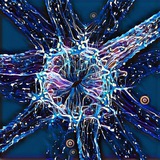group-telegram.com/neural_cell/218
Last Update:
tasty visual bci papers which i like in november of 2024
[2/3]
MonkeySee: decoding natural images straight from primate brain activity
tl;dr: CNN decoder reconstructs what a monkey sees from its brain signals in V1, V4, and IT areas.
• neural signals from 576 electrodes in V1/V4/IT areas record monkey's response to visual stimuli
• decoder architecture is essentially U-Net with additional learned Gaussian layer mapping electrode signals to 2D space
• model trained on 22,248 images from THINGS dataset achieves high correlation with ground truth
• results show hierarchical processing: V1 better at low-level features, IT at high-level semantics
link: https://openreview.net/forum?id=OWwdlxwnFN
Precise control of neural activity using dynamically optimized electrical stimulation
tl;dr: new optimization approach for neural implants that uses temporal and spatial separation for precise control of neural activity
• the array was placed on retinal ganglion cells (RGCs).
• developed greedy algorithm that selects optimal sequence of simple stimuli.
• uses temporal dithering and spatial multiplexing to avoid nonlinear electrode interactions
• improves visual stimulus reconstruction accuracy by 40% compared to existing methods
link: https://doi.org/10.7554/eLife.83424
my thoughts
The MonkeySee decoder effectively reconstructs images by mirroring how our brain processes information, from basic features in V1 to deeper meanings in IT. While not entirely novel, their experiments are well-designed, using multiple electrodes to cover various visual areas, which is impressive.
Conversely, the electrical stimulation projects are making significant strides, employing clever timing and placement strategies to enhance stimulation. They aim to reduce nonlinear responses by adjusting the timing of stimulation. Perhaps incorporating reinforcement learning could elevate this further?
BY the last neural cell
Warning: Undefined variable $i in /var/www/group-telegram/post.php on line 260
Share with your friend now:
group-telegram.com/neural_cell/218
